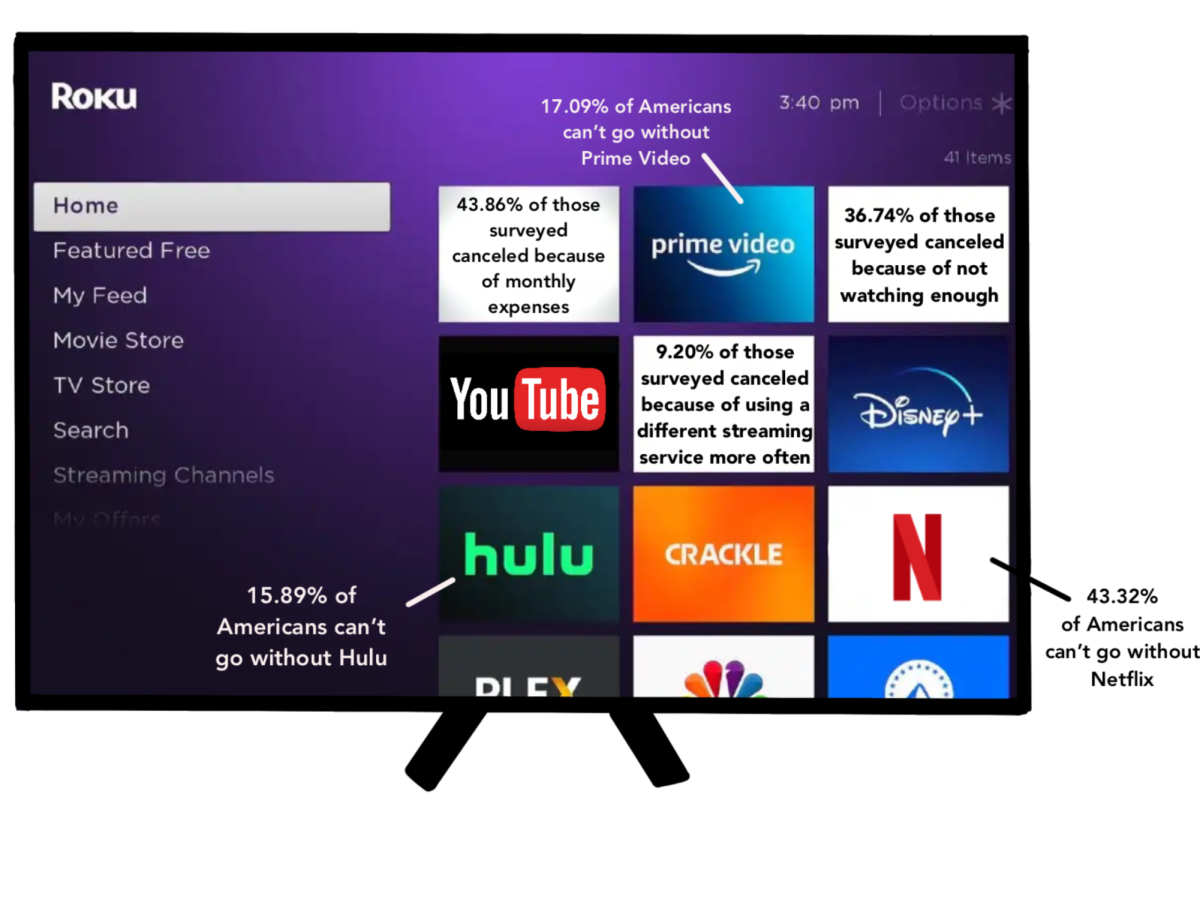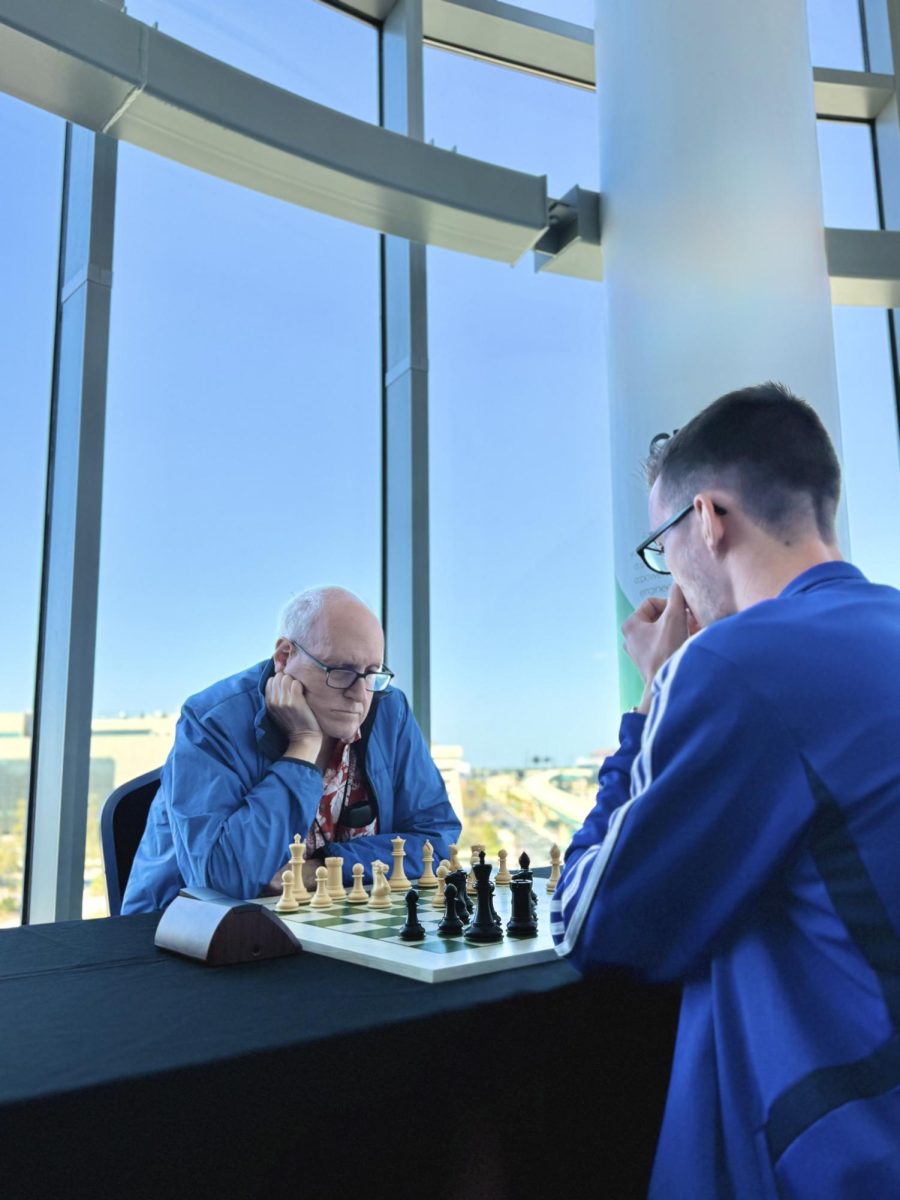From March to August of 2020, subscription streaming services were a main source of entertainment for the majority of the world under lockdown. Netflix, Hulu, Disney+, Apple TV and Amazon Prime faced off in a streaming war, and their increased success has resulted in countless streaming services existing now in 2023. Customers often subscribe to multiple streaming platforms to watch inaccessible media elsewhere. However, these services have recently increased their prices in a phenomenon The Wall Street Journal christened “streamflation.” Combined with the recent Writers Guild of America (WGA), and Screen Actors Guild and American Federation of Television and Radio Artists (SAG-AFTRA) strikes, the future of new media is uncertain.
Not all price increases were dramatic. According to an August article by Forbes, Netflix had the biggest increase of $19.99 for the ad-free premium plan, $15.49 for the standard ad-free plan and $6.99 for the ad-supported plan. Close behind is Hulu’s ad-free tier from $14.99 to $17.99, ad-free Discovery’s Max from $14.99 to $15.99, Disney+ premium plan from $10.99 to $13.99, Paramount+ from $9.99 to $11.99, and ad-free Peacock from $9,99 to $11.99 and the premium tier from $4.99 to $5.99. Junior Zayden Buford is considering canceling his Netflix subscription again due to rising prices.
“If [an increase in subscription prices] is only by a couple of dollars, it’s fine,” Buford said. “But if it’s…Netflix increasing by crazy amounts, then I don’t like it.”
He is subscribed to a variety of streaming services such as HBO Max, Hulu, and Disney+ with the ESPN bundle, which has received much attention over a conflict with the telecommunications company Charter Communications. This dispute reached a critical point on the night of Aug. 31 and impacted approximately 15 million customers, a large percentage of whom were unable to watch the first college football weekend. According to Forbes, Charter Communications removed Disney’s access to its Charter Spectrum cable package with Disney-owned channels such as ESPN, ABC and more. These inconsistencies can affect customers’ opinions on whether the subscription is worth keeping.
Science teacher Bryan Moretz had cable in the past and noted one of the reasons why cable lost popularity.
“We switched over from cable because the streaming services were cheaper,” Moretz said. “When [streaming services] first started, there was only Netflix and Hulu…now, what I pay in streaming services is probably equal to what my cable bill used to be.”
Similarly to Buford, Moretz also experienced issues with Netflix and visits it less frequently as a result.
“Since [Netflix] recently switched over to [limiting] password sharing, I’ve had to essentially kick my family members off [my account],” Moretz said. “I have thought about what services are the most important to me, and through that, I consider canceling the ones I don’t use.”
A contributing factor to this increase in prices is the ongoing Hollywood actors and writers’ strikes that have put multiple shows and films on hiatus. The WGA began striking in May, and SAG-AFTRA joined them in July. Actors and writers are seeking an increase in their pay, a larger cut of long-term payments given to actors for films or television shows with multiple airings, also known as residuals, and overall job security.
It is the first time in 63 years that the unions are simultaneously on strike, and while it does not affect people outside of the entertainment industry, its effect on Hollywood is major. According to Forbes, it is estimated that Hollywood could lose 3 billion dollars as a result of the WGA and SAG-AFTRA strikes.
Moretz believes that a hindrance to new content being released both in theaters and on streaming platforms is a necessary inconvenience in the face of the strikes.
“A lot of the time, it’s greed from the companies that is preventing them from paying the actors and writers what they deserve,” Moretz said. “If [the strikes] cause new media to be delayed, that’s unfortunate for the viewers but in the long term, better for the actors and writers.”
















